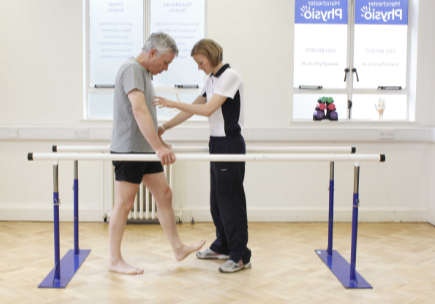Why Is Long-Term Mobility Tracking Important in Developmental Disorders?
Developmental disorders such as cerebral palsy, muscular dystrophy, and other neuromotor conditions often impact a child’s ability to move and function independently. In managing these conditions, long-term mobility tracking plays a critical role. Monitoring a child’s motor abilities over time not only informs treatment decisions but also helps families and healthcare providers anticipate future needs. One of the most widely used systems for categorizing motor function over time in children with cerebral palsy is the GMFCS, or Gross Motor Function Classification System. Its consistent use underscores the importance of structured, ongoing mobility assessment.
Understanding the Need for Long-Term Mobility Tracking
Mobility development is not a linear process, especially in children with developmental disorders. While early intervention is vital, it’s equally important to continue monitoring how a child moves, adapts, or faces new challenges as they grow. A child’s needs at age two may differ drastically from their needs at age ten. Growth spurts, changes in muscle tone, or emerging comorbidities can all affect gross motor function.
This is why mobility tracking must be long-term. It provides the data needed to understand whether interventions are effective, if modifications to therapy are required, or if assistive technology should be introduced. The GMFCS offers a reliable framework to support this kind of tracking over time by categorizing motor function across five levels and five age groups.
How GMFCS Supports Mobility Tracking Over Time
The GMFCS is uniquely structured to accommodate the changes that naturally occur in motor development. By using age-specific categories—under 2 years, 2 to 4 years, 4 to 6 years, 6 to 12 years, and 12 to 18 years—it allows healthcare providers to compare a child’s function not just to peers, but to their own developmental trajectory.
At each developmental stage, a child’s abilities are assessed to determine their level within the GMFCS. If a child remains at the same level over several years, this might suggest stable function. On the other hand, if a child moves to a different level, this could indicate progress or a regression in mobility that needs to be addressed. Tracking these changes provides essential insights into the effectiveness of ongoing therapy, surgery, or interventions.
Predicting Future Needs with Greater Accuracy
One of the most powerful benefits of long-term mobility tracking is the ability to forecast a child’s future needs. Using the GMFCS, clinicians can make educated predictions about whether a child will likely walk independently, require mobility aids, or need long-term caregiver support. These predictions are not just theoretical—they are practical tools that allow families to plan better.
For instance, if a child is classified at Level III on the GMFCS, they might currently walk with support but will likely need assistive devices or a wheelchair for longer distances as they grow. Knowing this ahead of time helps parents make informed choices about schooling, home accessibility, transportation, and healthcare services.
Improving Individualized Treatment Plans
Each level of the GMFCS describes a specific range of gross motor abilities. By continuously tracking a child’s mobility and comparing it with their GMFCS level, healthcare providers can customize treatment plans with precision. A child at Level I might benefit from targeted strength-building activities, while a child at Level V may need therapy focused on comfort, positioning, and communication rather than physical mobility.
Moreover, long-term data from the GMFCS can help in identifying subtle changes that may not be obvious in short-term assessments. This allows therapists and physicians to adjust goals and approaches before significant setbacks occur.
Supporting Research and Policy
Data collected through long-term mobility tracking using systems like the GMFCS also contributes to larger-scale research and healthcare planning. Researchers can analyze patterns across populations, identify risk factors for mobility decline, and test the long-term benefits of early interventions. Policymakers and insurance providers may use these insights to justify the allocation of resources for therapies, assistive technology, or inclusive education.
By demonstrating a clear picture of functional progression—or regression—long-term tracking makes it easier to advocate for necessary services and support across a child’s lifespan.
See Also: Exploring the Intersection of Tech and Sustainability
Empowering Families with Knowledge
Perhaps most importantly, long-term mobility tracking empowers families. When parents understand their child’s GMFCS level and observe how it evolves over time, they gain clarity about their child’s condition and future outlook. This helps reduce anxiety, facilitates advocacy, and improves communication with medical professionals, schools, and community organizations.
Families are better equipped to make choices that align with their child’s strengths and limitations when they have consistent, long-term data to guide them. Whether it’s planning for school accommodations or deciding on adaptive equipment, the insights gained from mobility tracking are invaluable.
Conclusion
Long-term mobility tracking is not just a clinical exercise—it is a cornerstone of meaningful care in developmental disorders. The GMFCS provides a standardized, age-appropriate system for assessing and following a child’s motor function across time. With regular tracking, healthcare providers can deliver more effective treatments, families can plan more confidently, and children with developmental disorders can receive the support they need to thrive at every stage of life.






